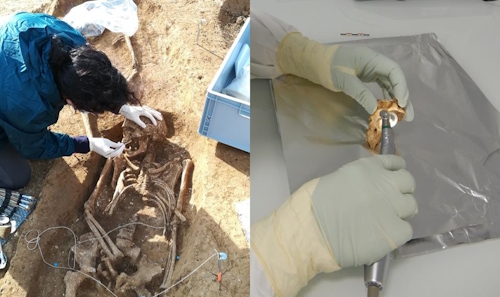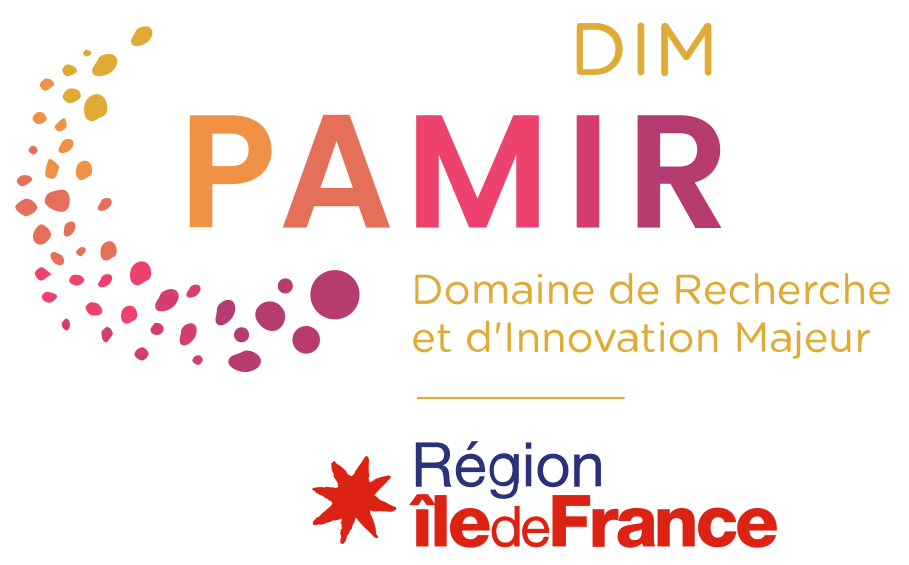
beDNA
Banque d’échantillons et de Données Nationale Archéogénétique
Responsabilité scientifique :
- Philippe Chambon
- Céline Bon
- Stéphane Deschamps
Axes méthodologiques :
Champs thématiques :
Secteurs disciplinaires :
Partenariat :
- Service régional de l’archéologie – ministère de la Culture
- Association Archéologie des Nécropoles
Financement :
- DIM PAMIR
- CNRS
- MNHN
ID projet : IDF-DIM-PAMIR-2023-8-001
Descriptif :
Le projet beDNA (banque d’échantillons et de Données Nationale Archéogénétique), développé par l’UMR 7206 Éco-anthropologie, se propose de mettre en place une banque d’échantillons unique afin d’anticiper les analyses paléogénétiques à venir, via le prélèvement systématique d’échantillons ostéologiques ou dentaires humains selon des protocoles adaptés sur toutes les opérations archéologiques. La banque beDNA, placée sous l’autorité et le contrôle du ministère de la Culture, fournira des conditions de conservation optimales et un suivi centralisé des échantillons.
Ce projet implique (1) la création d’une base de données accessible à tous les chercheurs porteurs d’un projet d’étude génétique, (2) la mise en place d’un protocole de prélèvement des échantillons commun à toutes les opérations archéologiques minimisant les risques de destruction et de contamination de l’ADN, (3) un espace de stockage dédié au projet, au Musée de l’Homme (MNHN Paris) ainsi (4) qu’un processus d’évaluation des demandes et d’approbation par l’État des demandes d’analyse d’échantillons.
La phase de test du projet, initiée en septembre 2020 sur la région Île-de-France, nous a permis d’évaluer et d’ajuster le protocole d’échantillonnage sur le terrain et les dispositifs de transfert vers la banque beDNA. En parallèle de la phase de test, nous mettons également en place la base de données beDNA associée à la banque d’échantillons en combinant une base de données archéologique (sites archéologiques, échantillons) et une base de données paléogénétique (suivi et résultats des études paléogénétiques).
Ce projet implique (1) la création d’une base de données accessible à tous les chercheurs porteurs d’un projet d’étude génétique, (2) la mise en place d’un protocole de prélèvement des échantillons commun à toutes les opérations archéologiques minimisant les risques de destruction et de contamination de l’ADN, (3) un espace de stockage dédié au projet, au Musée de l’Homme (MNHN Paris) ainsi (4) qu’un processus d’évaluation des demandes et d’approbation par l’État des demandes d’analyse d’échantillons.
La phase de test du projet, initiée en septembre 2020 sur la région Île-de-France, nous a permis d’évaluer et d’ajuster le protocole d’échantillonnage sur le terrain et les dispositifs de transfert vers la banque beDNA. En parallèle de la phase de test, nous mettons également en place la base de données beDNA associée à la banque d’échantillons en combinant une base de données archéologique (sites archéologiques, échantillons) et une base de données paléogénétique (suivi et résultats des études paléogénétiques).

